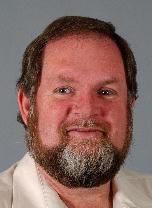Organic Chemistry
 One theme of our research involves the analysis of chemical
reactions, particularly those occurring in biochemical
systems. Results of these studies are being exploited to develop new
synthetic methods and to produce physiologically active compounds with
potential as pharmaceuticals. The other main field of research is in
the area of supramolecular chemistry and molecular recognition, and
involves the design and synthesis of molecular hosts tailored to form
inclusion complexes with specific guests. Applications of this
chemistry in the development of catalysts, molecular reactors, and
photochemical and thermal switches are being pursued.
One theme of our research involves the analysis of chemical
reactions, particularly those occurring in biochemical
systems. Results of these studies are being exploited to develop new
synthetic methods and to produce physiologically active compounds with
potential as pharmaceuticals. The other main field of research is in
the area of supramolecular chemistry and molecular recognition, and
involves the design and synthesis of molecular hosts tailored to form
inclusion complexes with specific guests. Applications of this
chemistry in the development of catalysts, molecular reactors, and
photochemical and thermal switches are being pursued.
Highlights of our recent results include the development of:
Personnel highlights in 2003 included the graduation of PhD students H. Onagi and S.B. McNabb, and the submission of a PhD thesis by M. Gebara–Coghlan and an MPhil thesis by P.G. Dumanski. H. Onagi was awarded a Postdoctoral Fellowship at Scripps Research Institute and S.B. McNabb a Japan Society for the Promotion of Science Postdoctoral Fellowship. M. Gebara–Coghlan and P.G. Dumanski took up positions with Therapeutic Goods Administration and Environment Australia. A.J. Herlt joined us as a highly skilled technical officer. M.M. Cieslinski was awarded prizes for her presentations at the 19th RACI Organic Chemistry Conference and the RACI NSW Organic Chemistry Group’s 24th Annual One-Day Symposium, and L. Barr received an award to present a lecture at the Southern Highlands Conference on Heterocyclic Chemistry. B.J.W. Barratt received the Jim O’Donnell International Travel Award of the RACI and gave an invited lecture at the Gordon Conference on Free Radicals.
Secondary metabolism of amino acids and peptides frequently gives rise to unusual products that would not be expected on the basis of laboratory precedent. This has prompted studies of the fundamental free radical reactions that may be involved. Consequently methods to assess the susceptibility of amino acids and peptides to radical degradation have been developed, and radical-resistant amino acids and peptides have been designed. Free radical reactions are associated with enzyme catalysis and a range of pathological and physiological conditions. Results of our studies therefore have potential in regulating biochemical processes and treating human diseases. Accordingly we are exploiting the results of our research to develop inhibitors of peptidylglycine α-amidating monooxygenase, for regulating the biosynthesis of mammalian peptide hormones and treating disease states associated with the over-production of these hormones. We are also developing prohormones to address hormone deficiencies. Other results are being applied to the synthesis of novel amino acids and peptides. (with B.J.W. Barratt, Y.-C. Tsai, L.Y.F. Chow, A.C. Cruickshank, A.J. Herlt, I. Li, N.A. Lorimer, S.B. McNabb, A.J. Mortimer, L. Radom, J.S. Simpson, Z.I. Watts, and M.J. Davies [Heart Research Inst., Sydney], A. Rauk [U. Calgary, Canada], A. Wright, M. Taylor [ANUTECH Pty Ltd], [Business ACT])
This work exploits cyclodextrins as the basis for the construction of molecular hosts and involves the preassembly of molecules to:
Another collaboration involves studies of the structure of melamine-urea-formaldehyde resins, and the search for alternative reagents and improved processes. We are also investigating the use of nitrile oxides in the stereocontrolled synthesis of polyfunctional molecules, particularly in order to develop a synthesis of the triol pharmacophore of the antioxidant scymnol. Other biochemical molecular recognition processes are also being studied, including the design and development of compounds to inhibit and stimulate ion-flux through calcium ion channels. (with P.A. Coghlan, M. Gebara–Coghlan, M. Nairn, A. Philbrook, J. K. Robinson, and J. Altin [Lipotek Pty Ltd], J.M. Broadbent [McFarlane Laboratories Pty Ltd, Melbourne], A. Dulhunty, M. Casarotto [JCSMR, ANU], N. Dunlop, G. Ryan [Orica Ltd and the UnIChe program], A. Ferrante, A. Poulos [Adelaide Medical Centre for Women and Children], G.W. Simpson [CSIRO Molecular Science, Melbourne])